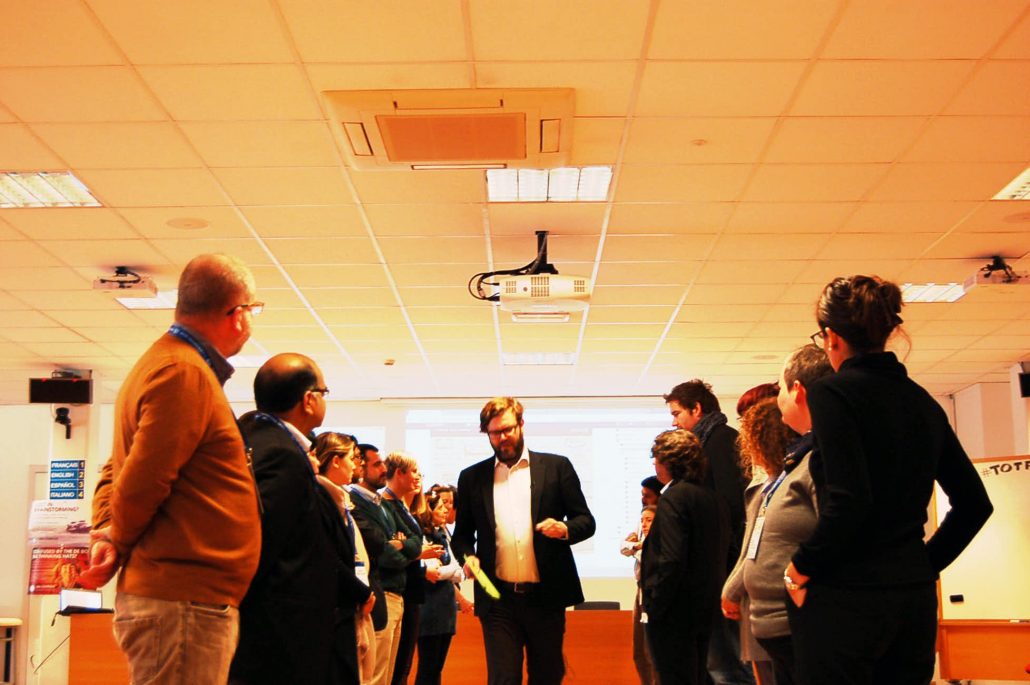Knowledge Fair

Knowledge transfer between practitioners
Overview
A knowledge fair is an event designed for sharing large amounts of information from numerous expert sources at a common venue with the help of visual aids and displays. It is a face-to-face method for sharing experiences, encouraging exchange and promoting new ideas and concepts.
How to use it
- Provide a networking platform.
- Share knowledge, facilitate access to experts and understand peer perspectives.
- Display resources and promote best practices.
How to apply it
Start:
- Advance preparation and warning for participants is required for any knowledge fair.
- Publicize as widely as possible, using a method appropriate to the target audience.
- Ask potential participants to submit their presentations, and then select those that are most relevant to the themes of the knowledge fair to participate.
Time/Steps:
- Identify key objectives and outline the prominent themes for the contributors to explore.
- Provide practical guidelines and individual assistance, and allow time for participants to create their displays in advance. Standard templates and common display tools will minimize visual distractions and maximize the amount of information that is absorbed and retained.
- Ensure that support is available early enough to assist the presenters in setting up their displays.
- Identify in advance who requires power supplies, projectors or other materials for their presentations.
- Select a site for the fair itself in a high-traffic area, to attract as many visitors as possible.
- Include people from diverse groups, with different training, to contribute to the complexity of ideas shared.
- Arrange to have technicians on hand, as well as access to a secretariat, for anyone requiring logistic support.
- Ensure that interested parties have barrier–free access to the fair, including time to explore it.
- Record the progress and reflections in “real time” using discussion forums, or Twitter for micro-blogging.
- Collect the relevant documentation and end-of-activity reports in a central location for accessible future reference.
How to adapt it
- Broadcast the Fair online using Web 2.0 tools if there may be a wider audience for the content, or if the Knowledge Fair itself may benefit from outside input. The first objective will require that participants and course staff share key points and insights online, whereas the second (complementary) goal requires a significant level of publicity within the relevant community before the activity itself to stimulate participation.
- A Virtual Knowledge Fair is an approach to sharing large amounts of content among key stakeholders at a distance. This is effective in Phase 1 of a blended learning approach to introduce participants to each other’s experience. Select relevant themes and provide outlines of the type of information to share. Best practice, case studies or particular challenges can be presented using video clips, collections of photos and links to resources. Ensure that there is adequate technical support.
Case study
Title:
Inter-agency exchanges at knowledge fair
Activity:
Inter-agency Knowledge Fair
Contact:
F. Vernat (UNDG)
Description:
A Knowledge Fair was organized in order to share knowledge and promote best practice in a face-to-face format that was both engaging and interactive. A call for proposals received nearly 60 applications. An inter-agency review panel then selected those which best represented the theme and spirit of the event. 16 different presentations were showcased by teams of 1 to 4 people over 3 working days. In order to ensure that the cases were examined in a profound and participatory manner, two complementary methods were incorporated into the Knowledge Fair. First, 6 projects were democratically selected to address in small groups. Two Conversation Cafés (see World Café) covered the remaining 10 projects (5 each) in a collaborative manner. Daily participant evaluations allowed the facilitation team to adjust approaches and address issues rapidly, resulting in an overall 91% satisfaction rate among the participants. The method was deemed successful and a second edition is currently being designed.
Tips
- Capture the results and outcomes in an accessible online format to create continuity of knowledge-sharing. Ensure that other interested practitioners are aware of the resource.
- Name the activity by objectives or other features. The agricultural community, led by the FAO, has coined the term Share Fair for their events of this type.
- Keep the atmosphere light and playful, to encourage openness and creativity.
- Encourage ownership by contributors and participants. This will create high-quality presentations and good interaction as people follow their own interests.
- Running a Knowledge Fair in multilingualcontexts is particularly complex and costly.
- Gain support from the upper echelons of key organizations in order to achieve open and honest participation by all stakeholders.
- Create incentives that motivate a competitive approach to making and presenting displays. Creating custom awards is one method that has proved effective.
Resources
- Visit the KSToolkit wiki for an overview of the method: http://www.kstoolkit.org/Knowledge+Fairs
- Quick tips from an organizational perspective: http://www.stevedenning.com/Knowledge-Management/knowledge-fairs.aspx
- Article about ILO experience: “The culture of a knowledge fair: lessons from an international organization”, available at: http://journal.km4dev.org/journal/index.php/km4dj/article/viewFile/38/54
- Example of a Virtual Knowledge Fair: http://waterwiki.net/index.php/Workspace/Water-K-Fair









